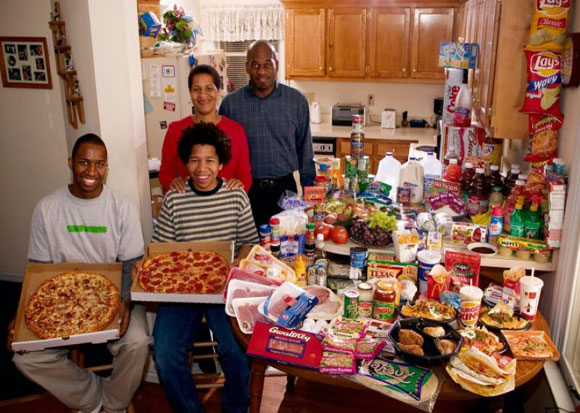Food for Thought

Do you know what a family of four in North Carolina eats in a week? Do you know how the proportions of items vary between fresh produce, dairy products, animal protein, processed and junk food between families in the United States and Kuwait? Have you ever thought about the different packaging our weekly groceries come in? Where would you suppose the weekly shopping bill is the highest? Where would you suppose it is the lowest? Do you think there are correlations between health and different eating habits/cost of food?
As we make conscious decisions around our health, it is very important to notice how culture affects our eating and spending habits. Some families have ritualized getting pizza on their way home from school and work, while some across the globe prefer more fruits and vegetables. Unfortunately in advanced economies healthier food options are often perversely more expensive in the short run, which can impact how some communities access them. Many families underestimate the long term effects of teaching their children to consume processed food and plastic packaging. It is important to realize the risks these behaviors pose and change habits to lower the occurences of several serious health problems including breast cancer.
In the photo project “Hungry Planet: What the World Eats” by Peter Menzel and his wife Faith D’Aluision, we are able to see what a typical family from various countries eat in one week, how much they spend, and what their average family structure looks like. As detailed in their article, “The photos are revealing as you get to see both economic, and cultural differences between the countries. There was poverty and very minimal food selection for some families. Then there was fast food for other families, and even high end food purchasing for yet others. The selections were clearly based on the culture as well. The Germans like their beer, and the Americans don’t go without a weekly pizza or two. While the last photo of a family in Sudan consists mainly of bulk grains and a single jug of water.”
This collection reveals just how differently we all approach feeding our families, and how important it is to remember how privilege can affect our diets. Notice what families purchase more processed foods, how much plastic is visible on each table, and how expenses combine to create a snapshot of what eating across the world truly looks like.
To read the orginial article click here!

